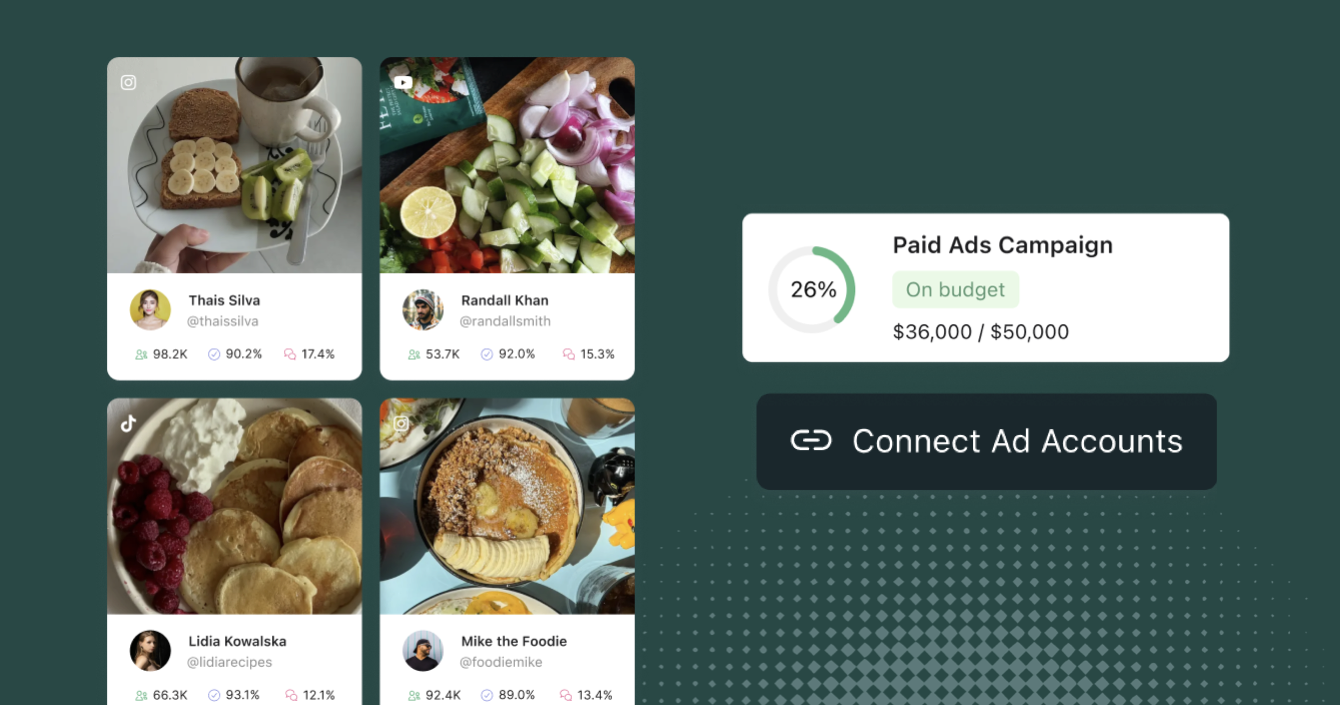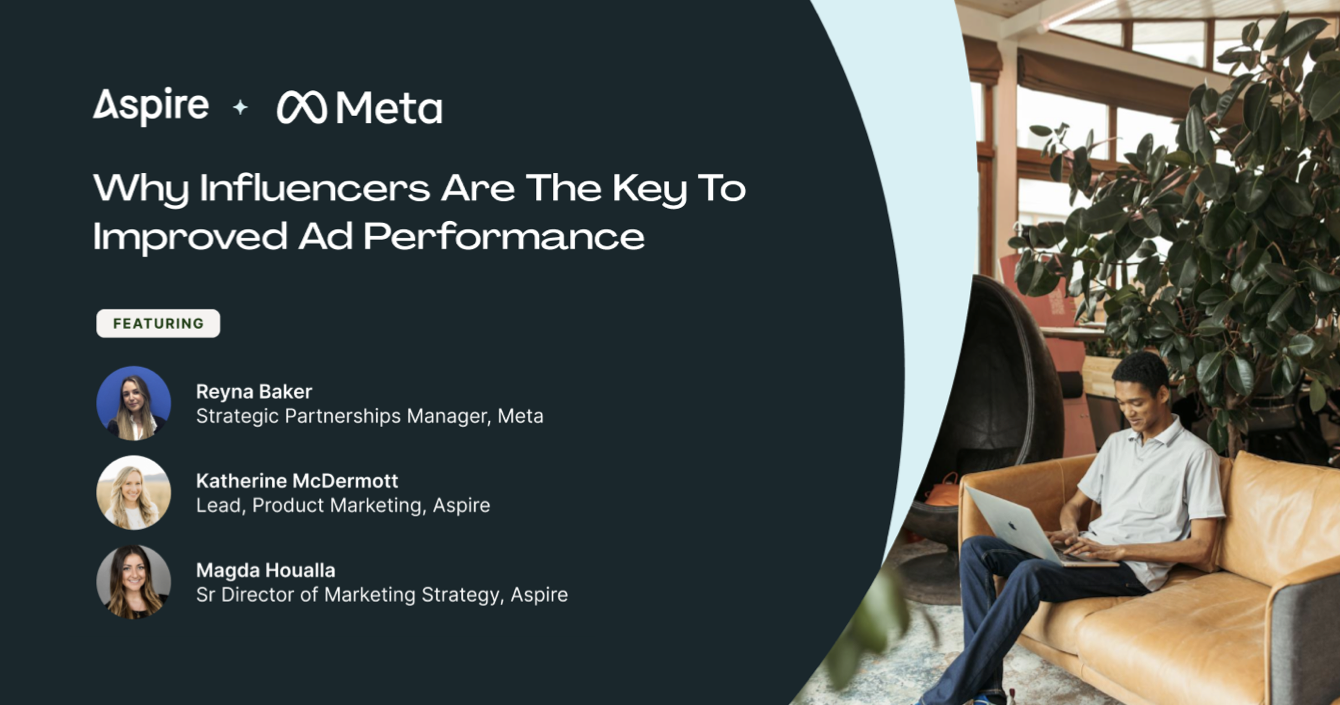Why Your Paid Ads Fail: Fix It With Influencer Content

As a marketer, you’ve likely observed a troubling trend: your paid advertising campaigns are becoming more expensive and less effective. You formulate a hypothesis, test different targeting parameters, adjust your bids, and yet, the results fall flat. This is a common pain point, but the variable you may be overlooking is creative quality.
The issue is ad fatigue. Modern consumers are inundated with marketing messages, seeing between 4,000 to 10,000 ads every single day. They have become desensitized to polished, repetitive brand advertising.
That means the solution isn't just better targeting, but better creative — specifically, authentic content sourced through influencer marketing — in paid advertising.
The Real Reason Your Paid Ads Are Underperforming: Creative Fatigue
While targeting and offers are critical components of any campaign, the primary culprit for underperformance is often the creative itself. This phenomenon is known as creative fatigue — the point at which an ad's performance declines because the audience has been overexposed to it.
The symptoms are clear and measurable: declining click-through rates (CTR), rising cost-per-click (CPC), and dwindling engagement. When your creative becomes stale, your return on investment suffers.
This problem is compounded by a well-documented erosion of consumer trust in traditional advertising. Consider the following data points:
- An overwhelming 91% of people find that ads are more intrusive than they were in the past.
- This skepticism is crucial, as 81% of consumers state they need to trust a brand before making a purchase.
This means repetitive ads can actively damage your brand's perception. Modern consumers crave authentic, relatable, and helpful content, not generic brand ads. If your ads are underperforming, it’s often a sign that the creative isn't resonating, which is a key reason why your Instagram ads aren’t converting.
The Solution: How Influencer Content Breathes Life into Your Ad Campaigns
Influencer-generated content (IGC) is the proven antidote to creative fatigue. This content is inherently more authentic and relatable because it comes from real people, which builds the trust that today's consumers demand. The data from this experiment is compelling: ads powered by user-generated content (UGC) achieve 4 times higher click-through rates and a 50% reduction in cost-per-click.
Beyond authenticity, influencer content provides the volume and diversity of creative needed to optimize performance on modern ad platforms. AI-driven systems require a constant stream of fresh assets to test and learn what works best. By building a creator program, you create a content engine that provides high-quality content that drives conversions and allows you to effectively scale your paid media efforts. You can learn more in our 2025 Guide: How You Scale Paid Media With Creator Content.
A Practical Guide to Integrating Influencer Content into Paid Ads
Ready to implement this strategy? Follow this 3-step methodology to integrate influencer content into your paid ad campaigns.
Step 1: Build Your Creator Ecosystem
To generate a consistent supply of fresh creative, avoid one-off campaigns. Instead, focus on building a long-term or always-on creator program. This approach creates a steady stream of high-quality, authentic content that you can deploy across all your paid channels.
Start with a small group of micro-creators who genuinely align with your brand values. These long-term partnerships are incredibly valuable. In fact, our study showed that brand ambassador programs consistently deliver some of the highest ROI for brands, proving the power of sustained relationships.
Step 2: Leverage Different Influencer Ad Formats
Once you have a library of IGC, you can amplify it through several powerful ad formats.
- Partnership Ads: Meta Partnership Ads are posts amplified by the brand but run directly from the creator’s handle. This format combines the creator's credibility with your advertising budget and targeting capabilities. This method delivers a proven 53% higher CTR and a 19% lower cost per action than standard ads. Get more insider tips from Meta to maximize performance.
- Allowlisting: This is the process where a creator grants a brand advertising permissions to their social media accounts. This gives you full control to target new audiences, A/B test different creative variations, and run dark posts that don't appear on the creator's feed. To learn more, read our guide on everything you need to know about influencer allowlisting. (It's also important to use the correct terminology. Learn why the industry is moving from "whitelisting" to "allowlisting" in our post on allowlisting vs. whitelisting).
- Brand-Owned Ads with IGC: This is the most straightforward method. You simply repurpose influencer photos and videos for ads that run from your brand’s own account. This approach provides powerful social proof and makes your brand feel more human and trustworthy.
Step 3: Measure What Matters
To validate your hypothesis and prove ROI, you must track the correct metrics. Focus on the data that directly impacts your business goals.
Key Performance Metrics:
- Cost Per Acquisition (CPA)
- Click-Through Rate (CTR)
- Conversion Rate
- Return on Ad Spend (ROAS)
Content Performance Indicators:
- Engagement rate by creator
- Performance by content type (e.g., video vs. static image)
Analyzing this data will reveal which creators and content types produce the best results, allowing you to refine your strategy over time. One helpful resource that covers all these questions is our guide to influencer allowlisting.
Common Mistakes That Kill Your Results (And How to Avoid Them)
As you implement your influencer advertising strategy, avoid these common experimental errors to ensure valid results.
- Treating creators like vending machines: The most compelling content comes from collaboration, not rigid instruction. Provide a clear brief, but trust the creator's expertise and give them the freedom to connect with their audience authentically.
- Focusing only on follower count: A larger audience is not always a better one. Nano and micro-influencers often have higher engagement rates and more authentic connections with their followers. In fact, 61% of brands are now primarily working with smaller creators to drive results.
- Not planning for scale: A few creative assets are not enough to combat ad fatigue in the long run. You need a system that delivers a consistent flow of fresh ad creative. A robust creator program, managed with a platform like Aspire, acts as a self-operating production crew that solves this problem at scale.
Transform Your Paid Ads into a Conversion Machine
If your paid ads are failing, the key is to combat creative fatigue with a steady stream of authentic influencer content. Influencer marketing in paid advertising is no longer just a trend. It is a strategic imperative for driving scalable performance and measurable ROI.
Stop investing in ads that fail to connect. It’s time to audit your current ad creative, begin building genuine relationships with creators, and transform your paid advertising from a cost center into a powerful conversion machine.
Ready to operationalize a word-of-mouth commerce strategy? Learn more about how Aspire, the leading influencer marketing software platform, can help you find creators, automate campaigns, and generate high-performing ad content at scale.


